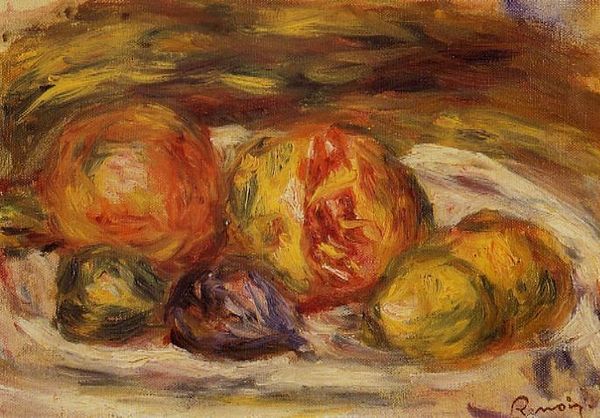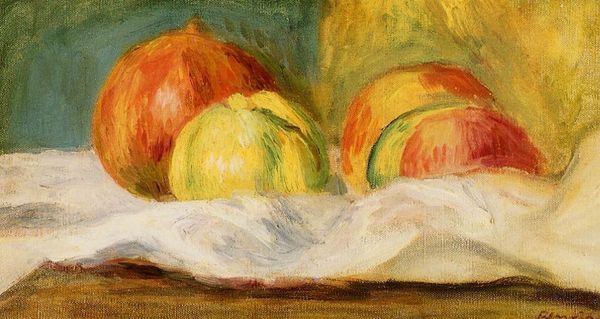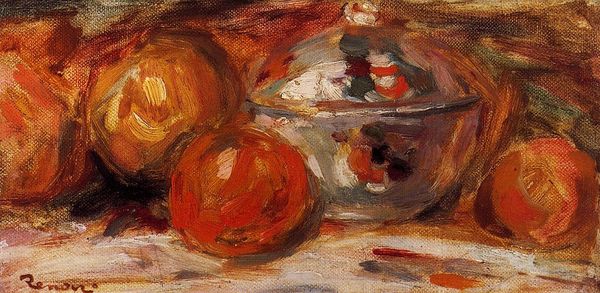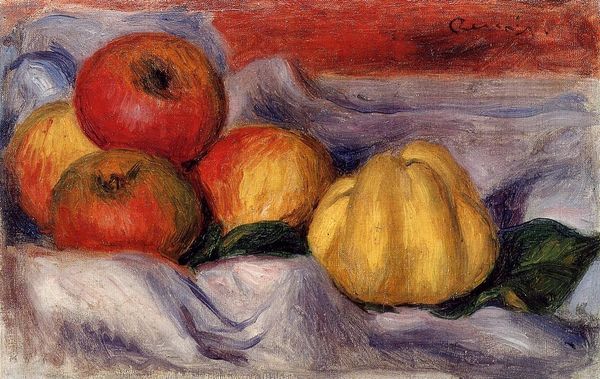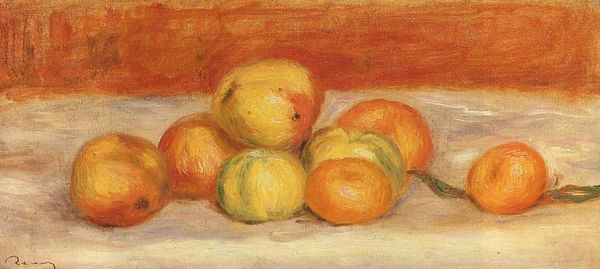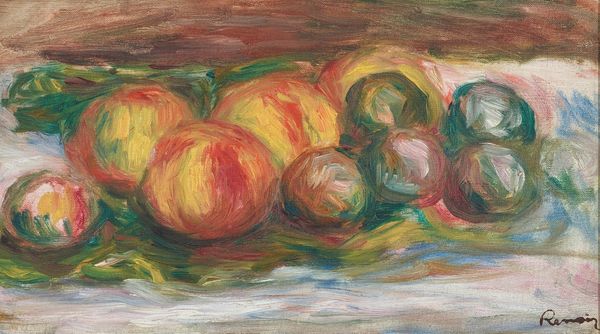
plein-air, oil-paint
#
still-life
#
impressionism
#
plein-air
#
oil-paint
#
oil painting
#
orange
Copyright: Public domain
This is ‘Still Life’, an oil on canvas by Pierre-Auguste Renoir. The painting's composition is a symphony of rounded forms and vibrant hues, evoking a sense of warmth and abundance. Oranges, lemons, and other fruits are loosely arranged against a neutral backdrop, their forms rendered with thick, textured brushstrokes. Renoir’s structural approach to painting invites us to consider how color and form create meaning. The brushstrokes, which some may see as simple, actually function as signifiers that challenge traditional values of art and representation, pointing instead toward a modernist exploration of perception and materiality. Note the chromatic relationships between the fruits and background: do these challenge fixed meanings? In closing, consider how Renoir destabilizes the traditional still life, transforming it into a discourse on color, form, and the very act of painting. The interpretation of such a work remains forever open, reflecting our own ever-evolving understanding.
Comments
No comments
Be the first to comment and join the conversation on the ultimate creative platform.
